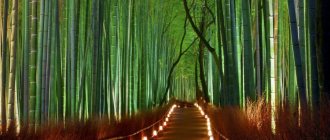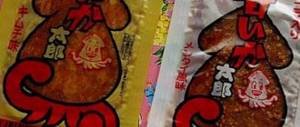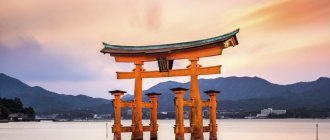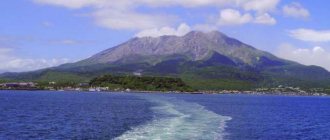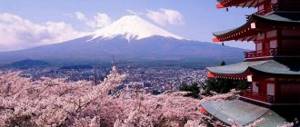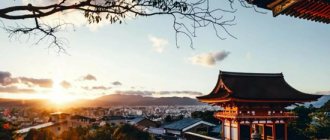Cherry blossoms
For example, countless works of literature use the metaphor of the short lifespan of cherry blossoms. Blooming “dust” quickly fades and falls to the ground (death). The Japanese understand that the life of a flower is too short. The cherry blossom reflects us humans, and we are ready to accept death, the Japanese believe. Perhaps this is one of the reasons why cherry blossoms look so deep and enchanting to the Japanese. This is a unique, typically Japanese way of thinking about cherry blossoms.
Another example is "Wabi-sabi". This movement is widespread in all aspects of Japanese art, literature, philosophy and thought. The figure of nature, objects, and relationships with living things are an important part of this beauty-oriented worldview, such as imperfection and fragility.
There are well-known examples of wabi aesthetics, such as dry sansui (for example, the stone garden of a Zen temple), ceramics that were specially made to emphasize naturalness, to emphasize nature.
Ikebana 生花
There are wooden buildings that harmonize and do not stand out in the surrounding nature.
- Even the most sacred temple of Ise in Shinto is a living example of Wabi-Sabi. In fact, temples and shrines are destroyed once every 20 years and then rebuilt from scratch. To physically express the importance of beauty and fragility, what better way to learn through religion that it is strongly connected to the natural world?
- In fact, temples and shrines are destroyed once every 20 years and then rebuilt from scratch.
Additionally, the Japanese often use natural and seasonal elements when writing things in all forms, be it poetry, prose, or letters to friends. A formal letter usually begins by mentioning the seasons.
Haiku traditionally emphasizes nature as a subject. Additionally, metaphors using nature are very common in literature.
There is no doubt about the importance of nature in Japanese culture. The Japanese view of these four seasons is very different, especially from Western concepts.
23 WISDOM OF ZEN BUDDHISM
Flora of Japan
Bamboo grove in Arashiyama, Quito, Japan
Just like the water landscape of Japan, the country's flora is diverse and unique. And this is due to the island remoteness and location of Japan, climatic conditions, large amounts of precipitation throughout the year, relief and geographical features of Japan. The land of the “rising sun” is characterized by flora and fauna living in tropical, subtropical and temperate latitudes.
A peculiarity of the flora and fauna of Japan is the presence in this country of absolute endemics among representatives of flora and fauna. These are those special and amazing species of animals and plants that live only in this territory. And there are many such endemics here.
What is the richness of Japan's vegetation? How does it surprise and at the same time amaze not only true fans of botany, but also numerous tourists of this amazing country?
Waterfall in the forest
67-70% of Japan's territory is covered with forests. Different islands have different forests. In the subtropical forest, the most common trees are: endemic pine, evergreen oak, thuja, cryptomeria, cypress, star anise, castanopsis, camellias, etc. In some places, bamboo and ginkgo also grow. In such a forest, the undergrowth filled with aralia, magnolia, gardenia and other inhabitants of the subtropics is no less interesting. These plants create a unique forest carpet that captivates the eyes of any visitor to such a forest. One of the attractions of the island of Honshu is the unique laurel forest.
Rainforest on Ishigaki Island, Okinawa Prefecture, Japan
Another interesting representative of the plant world is the tropical forest of Japan. This is a completely different kind of wet forest. It is densely populated by banana and mango trees, ferns and all kinds of palm trees, ficus, cycads and other equally interesting trees. In such forests there are rare and often ancient specimens of Japanese cryptomeria, the age of which can reach 2 thousand years. A variety of vines and epiphytes grow here with pleasure, clinging with their roots to the bark of trees and creating a beautiful, brightly flowering cap.
On the contrary, the north of Japan, with its cool-temperate climate, is occupied by a broad-leaved deciduous forest, which is widely populated by spreading oaks, evergreen pines and spruces, fir and beech, chestnuts, maples, hornbeams, lindens, birches and other deciduous tree species characteristic of mid-latitudes. The mountain peaks are favored by various rhododendrons, dwarf cedar trees, heath and so-called alpine forests.
It is impossible not to say about the most famous and legendary plant associated specifically with Japan - sakura or finely serrated cherry. This is not a single plant, but a whole group of early flowering shrubs of the Plum family. And the most famous type is the finely serrated cherry or sakura. The peculiarity of this plant is its early flowering before the leaves appear, and therefore after flowering this shrub has the appearance of a lush pink or white flower cloud.
Sakura blossom
In nature, this shrub grows quite tall, sometimes reaching 20 m in height. In the wild, sakura is found in the Japanese archipelago, on the mainland in China and on the Korean Peninsula. For decorative purposes, this bush is pruned, and plants of various bizarre shapes are formed. It is impossible to take your eyes off the cherry blossoms; this herald of Japanese spring is such a beautiful and mesmerizing sight. Sakura has become a talisman of Japanese culture, painting, poetry, traditions and the Japanese way of life.
However, you can find few Japanese people who want to get into untouched nature.
In fact, few Japanese people want to stay in untouched and wild nature for long. Rather, the Japanese prefer “pure” natural spaces, such as landscaped bonsai gardens, ikebana gardens and well-kept thermal baths.
From the point of view of Western people, these spaces belong to different categories of nature. For many Westerners, “nature” and “wild” mean magnificent rivers, high mountain ranges, forests and vast fields.
In contrast, in Japan it is quite common to refer to gardens and parks as natural. If they are filled with trees, flowers and water, they are considered natural landscapes. Both untouched, primitive nature and “pure man-made nature” fall into the category of nature.
The iconic Shibuya intersection. Tokyo
- What Westerners call nature, undeveloped, dirty, remote, places with water and snow, are dangerous and terrible places from the ordinary Japanese point of view.
The Japanese fear of nature is largely based on the reason that most people in the country live an overly urbanized life. The 2010 census shows 90.7% of Japan's total population lives in cities.
Gaming machines
- But the main reason why Japanese people should keep their distance from nature is that Japanese nature can be truly terrible.
"Religion through faith" and "religion through feelings"
A second aspect that can help to understand the Japanese attitude towards life and death is to compare it with the perception of death in monotheistic religions. In 1995 I went to Israel for the first time. There I traveled along the roads that Jesus walked - everywhere you go there is desert, and it makes you feel uneasy. There is a feeling that there is nothing on this earth that would hold you here. It is not enough to simply read the Bible to experience this very special feeling.
I walked along the Jordan, heading towards the holy land of Jerusalem. Suddenly it was revealed to me that the inhabitants of the desert could not help but hope for something unique and extremely valuable somewhere there, in the heavens. They could not help but sincerely believe in one god, located somewhere in the heights, far from this desert land. There was a distinct feeling that without this faith one could not survive a day here. I could not help but come to the conclusion that this is how a religion based on faith is born.
When I was already returning from a trip to Israel, and the plane was approaching the Japanese Islands, it was like a veil fell from my eyes. Spread before me were the greenery of the forests and the endless ocean into which the rivers flowing through the dense forest flow. I spontaneously remembered the gifts of the forests and the sea, as if in reality I heard the cool murmur of rivers and felt the beauty of flowers and herbs that replace each other throughout the year.
I remember the feelings with which the ancient poets wrote, whose poems were included in the collection “Manyoshu” (“Collection of Myriad Leaves”); It’s as if you feel on your skin the breath of your ancestors who spent their lives in the forests. Any living creature feels calm on this earth, and there is no need to imagine some unique value somewhere out there, in the heavens. Forests, mountains and valleys are filled with a sense of the presence of deities, echoing with the voices of Buddhas and Bodhisattvas. Is this why polytheism appeared on the Japanese islands as a religion based on feelings and sensations?
The Japanese have always coexisted with natural disasters.
Even Japanese hornets, which live in many areas of Japan, can cause death. Hornet stings cause excruciating pain.
Jellyfish in many places across the country can be deadly, with some snake bites causing hospitalization or death. And don't forget the huge poisonous centipede (Tobismkade), straight out of horror movies, found in the countryside.
They grow up to 30 cm in length, their bite causes severe pain, chills, fever, etc.
Natural disasters often occur in Japan. Strong earthquakes and tsunamis, landslides, typhoons, volcanoes and floods. Of course, such natural disasters occur in different countries around the world, but it can be said that Japan is a country that is “in harmony with them.”
- The Great East Japan Earthquake, which struck the Tohoku region in 2011, is one of the largest earthquakes recorded in the world. Even in Japan, which boasts the world's most sophisticated earthquake prevention measures, 16,000 people were killed and 2,500 were missing.
Fukushima.
The Great Kanto Earthquake of 1923 resulted in over 140,000 deaths from earthquake, fire and firestorm. The 2021 Kumamoto earthquake and severe floods caused by the heavy rains of 2021 destroyed the city and killed many people. Japan has always been a country that has dealt with a lot of natural disasters.
Now you can understand why there is a fear of nature in Japan. Unlike many countries in the West, Japan is a very dangerous place in terms of natural disasters.
- Of course, just because the Japanese have a certain sense of fear does not mean that they do not feel a deep connection with or respect nature. Nature may be terrifying, but at the same time, as mentioned above, it is clear that nature is immersed in Japanese art, lifestyle, culture and beliefs.
Photo 1900
What was behind the decree of compassion for living beings?
Tsunayoshi, the fifth Tokugawa shogun, issued the famous decree “On the Prohibition of Taking the Life of Living Creatures” in 1687, which prohibited the killing of any animals and the consumption of meat. In fact, this is not one document, but a general name for acts about which the population was notified 135 times - presumably because it was often violated. The category of “living beings” included dogs, cats, birds, fish, and even shellfish and insects. Most often, 40 times, they called for not killing birds, followed by cats and dogs (33 times) and horses (17 times).
Historical series tend to portray this as brutal laws that led to tens of thousands of people being arrested. However, Tokugawa Tsunenari, a descendant of the Tokugawa shogun family, in his book “Genes of Edo” (Edo no idenshi, “PHP kenkyujo”) writes in defense of his ancestor: “Over the 24 years of publication of these acts, 69 people were punished, and only 13 people."
In fact, Tsunayoshi's decrees clearly demonstrate the ethical principle of protecting the weak - orphans, old people, the sick, the exhausted. There were decrees that established the death penalty for the owner of an inn who took things from exhausted travelers, or for one who threw a foundling into the river.
Foundlings were not supposed to be given to the authorities, but to be raised by oneself or given to those who wanted to adopt an adopted child. To prevent child abandonment, it was ordered to keep household lists of children. For exhausted people there were institutions where the poor were provided with material assistance.
Tsunayoshi's decrees on dogs, prohibiting, for example, driving them out, attract attention - because of them he received the nickname “dog shogun” (inu kubo). At that time there were many stray dogs, and they often attacked people. In order not to increase their number, it was ordered to create a system for registering dogs, in which dog hair was attached to the document. In England, the animal welfare law was passed in 1911, so Japanese legislation is the oldest in this area.
In Edo, dog care facilities were established in Okubo, Yotsuya and Nakano. Located in Nakano, the Okakoi Goyo Yashiki (Fenced Estate) occupied an area of 100 hectares (about 20 Tokyo Dome stadiums). At its busiest, it housed more than 80,000 dogs. In memory of this institution, bronze figures of five dogs were installed next to the Nakano City Administration building.
Sculptures of dogs near the Nakano City Hall (PIXTA)
In recent years, the role of Tokugawa Tsunayoshi has been re-evaluated; if earlier he was perceived as a bad ruler, now he is often spoken of as an outstanding shogun. The German doctor Engelbert Kaempfler, who twice had an audience with the shogun, writes in his “Diary of a Travel to Edo” that Tsunayoshi made a strong impression on him as an excellent ruler.
Japanese thinking about nature is respected in the West.
These unique Japanese concepts of nature are quite different from those of Westerners, but recently they have gradually begun to spread throughout the world. Rather than being discouraged as being different from their own culture, Japanese thinking is quite respected around the world.
Rock garden
For example, Japanese gardens and Japanese art, literature and interior design, their stance on respect for nature based on religion such as Shinto and Zen , martial arts thinking, have many fans abroad.
Bonsai
“At Home Nature” is the safest way to enjoy the seasonal changes while connecting with nature. This is why landscaped gardens, bonsai, ikebana and seasonal flowers (such as cherries and plums) are important to these people. This is unique in Japan, it represents a deep respect for nature and its great power.
rock garden
Views: 3,312
Share link:
- Tweet
- Share posts on Tumblr
- Telegram
- More
- by email
- Seal
"Personality" and "person"
One can probably talk about the opposite nature of religions based on faith and on sensations. The borrowed word ko, “separateness,” is perhaps best suited to describe the feelings of a person living by faith. In other words, every single person believes in the existence of a higher value in the otherworldly heavenly world. Isn’t this where the concepts of “personality” and “individuality” originated?
However, in the case of religions based on sensations, as I notice, the Japanese word hitori
, "one man". For more than a thousand years, we can observe legends and stories about this man - from “one man”, burdened by loneliness in the wilderness, through whileing away the night alone and sadness in the awareness of his insignificance - to “one man”, whose self-awareness extends to the entire Universe, becoming part of her self-awareness.
Compared to the concept of “personality,” which was borrowed from Europe in modern times, the meaning of the Japanese word “person” is much deeper and broader. And this idea of a person is inextricably linked with the feeling of the frailty of existence, characteristic of the inhabitants of the Japanese islands, which I have already spoken about.

